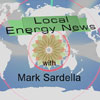 Several readers have asked me to clarify Gore's position on nuclear power in his new 10-year carbon-free electricity plan. (I really wish you folks would post comments instead of sending me emails!)
Several readers have asked me to clarify Gore's position on nuclear power in his new 10-year carbon-free electricity plan. (I really wish you folks would post comments instead of sending me emails!)
Gore announced his plan July 17th at Constitution Hall, and like other politicians, Gore selects his words carefully. In fact, his 3200-word speech doesn't include the word "nuclear" at all. Katie Couric at CBS interviewed Gore after his speech, but let him off easy on his answer about nuclear power. Gore said, “We have a lot of nuclear plants in the U.S., and … I'm not anti-nuclear. I'm a little skeptical that's it's gonna play a much bigger role than it does now. I think it'll continue to play a role.” Hmmm. Way to go, Katie.
The group “We Can Solve It”, founded by Gore, reports that his plan includes a mix of energy sources, including “existing nuclear”. That’s vague but also misleading, appearing to mean existing “power plants” rather than the existing “percentage of the electricity mix”, which is around 20 percent.
Fortunately some reporters from Associated Press questioned him in more detail. World Nuclear News reported, “He later admitted, however, to the Associated Press that his plan relies on nuclear power for the 20% of US electricity it currently produces.” Even that statement could be misinterpreted, but the Arizona Star reported it solidly: “Gore told the AP his plan counts on nuclear power plants still providing about a fifth of the nation's electricity…”.
So I maintain that in order for nuclear to still be contributing one fifth of the nation’s electricity ten years from now, we will need to build a lot of new nuclear power plants. According to the EIA, we need to add about 120 gigawatts of new generation over the next ten years to meet projected growth and to replace retiring power plants. (The nuclear fleet alone is 26-years old, on average.) So if nuclear is still going to make up one fifth of the mix, an estimated 24 gigawatts of that new generation will need to be nuclear.
If all this is too much of a bummer, check out Harvey Wasserman’s great post today at CommonDreams telling how unlikely the nuclear revival is.
 Wednesday, July 30, 2008 at 07:04PM
Wednesday, July 30, 2008 at 07:04PM  Crude oil prices are back where they were eight weeks ago. Over the past two months, oil prices climbed from $122 dollars per barrel to $145 dollars, and they’re back at $122 dollars again. Price instability of this magnitude hasn’t been seen since the Iranian Revolution of 1979, and instability in the Middle East appears to be a factor this time as well.
Crude oil prices are back where they were eight weeks ago. Over the past two months, oil prices climbed from $122 dollars per barrel to $145 dollars, and they’re back at $122 dollars again. Price instability of this magnitude hasn’t been seen since the Iranian Revolution of 1979, and instability in the Middle East appears to be a factor this time as well.









